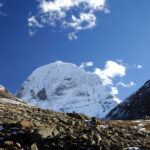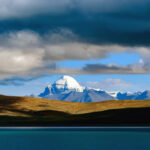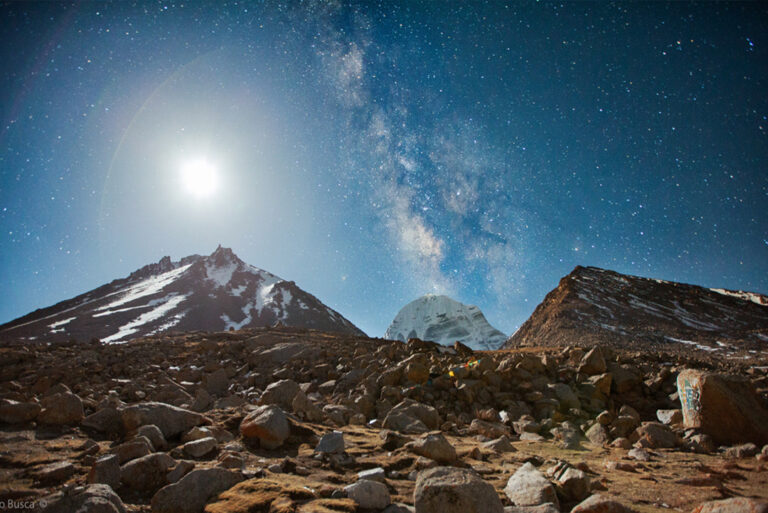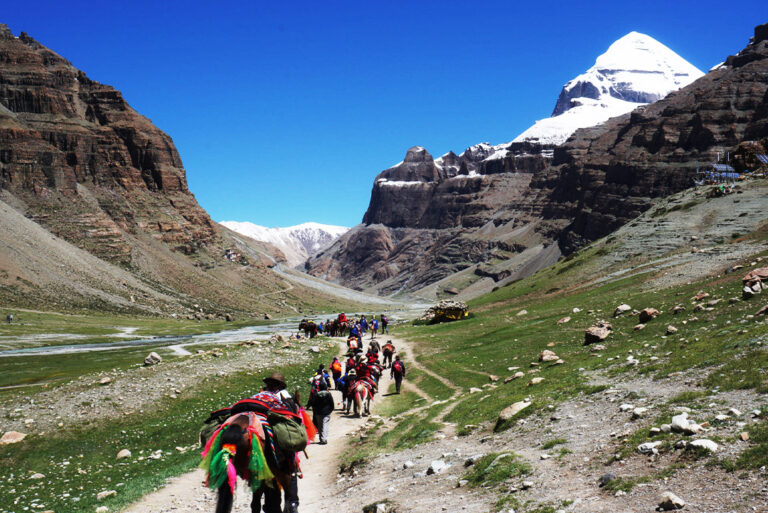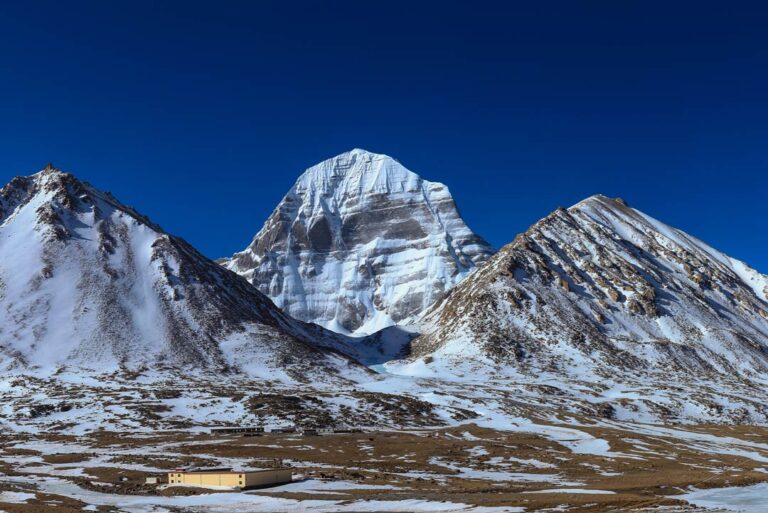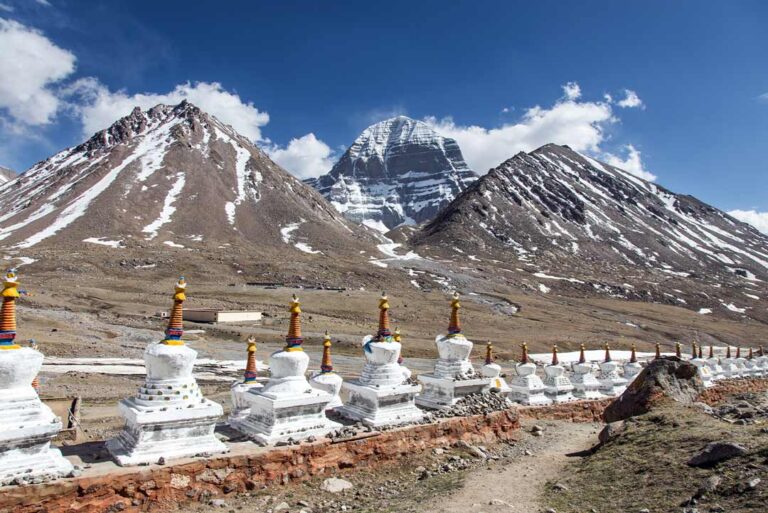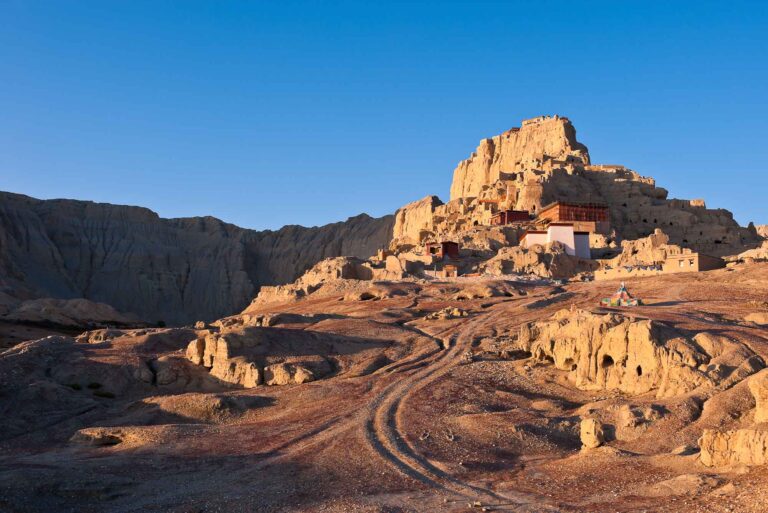Mansarovar Lake: Nestled amidst the breathtaking landscapes of the Tibetan plateau, Mansarovar Lake stands as a testament to the immense spiritual significance and natural grandeur of the region. Situated at an elevation of 4,583 meters, this ethereal body of water is renowned as the highest lake in the world and holds a special place in the hearts of thousands of pilgrims who embark on the sacred Kailash Manasarovar Yatra each year.
With its crystal-clear waters mirroring the snow-capped peaks that surround it, Mansarovar Lake exudes an unparalleled sense of tranquility and purity. Encompassing an area of approximately 412 square kilometers, its pristine waters are said to be as clear as a sapphire, allowing visitors to peer into its depths with ease. Flanked by the majestic Himalayan range to the south, this enchanting lake is a sight to behold and is revered by followers of Buddhism, Jainism, Hinduism, and the Tibetan religion of Bön.
The name “Manasarovar” translates to “the invincible lake” in Tibetan, and according to religious texts, it was bestowed this name during the 11th century when Buddhists emerged victorious in a competition against the Bon religion. Along the shores of Mansarovar Lake, pilgrims will discover five Buddhist monasteries, including the renowned Chiu monastery on the lake’s Northwest shore, as well as Gossul, Seralung, Yerngo, and Trugo. These sacred sites bear witness to the profound spiritual energy that emanates from the lake.
Pilgrimage Around Mansarovar Lake
A pilgrimage around Mansarovar Lake is an essential part of the Kailash Manasarovar Yatra, where devotees embark on an 82-kilometer journey, seeking wish fulfillment and liberation from their sins. Furthermore, adventure enthusiasts are drawn to this divine destination, finding solace in camping under the starlit sky, surrounded by the serenity of the lake’s environs.
Mansarovar in Hinduism
According to Hindu mythology, Mansarovar Lake was created by Lord Brahma, providing his divine sons with a place to cleanse themselves after traversing the sacred land. Buddhists believe that the mother of the legendary Buddha was transported to this very spot by the gods, purifying herself by bathing in the holy waters of Mansarovar Lake. Countless tales recount the sanctity and purity of this lake, with different regions and people offering their own narratives. Moreover, Mansarovar Lake exhibits a remarkable color transformation as the sun illuminates its surface. Sitting on its shores, one can marvel at the ever-changing hues, from deep blue to bluish-green, and finally to green. If fortunate, visitors may even witness the vibrant arc of a rainbow, accentuating the lake’s beauty and radiating positivity.
The circumambulation of Mansarovar Lake during the summer pilgrimage season is believed to fulfill wishes and absolve devotees of their sins. Beyond its spiritual allure, the lake entices adventurers to partake in the serene experience of camping under a clear night sky. While no direct bus route is available to reach Mansarovar Lake, travelers can choose to fly or take a train to Lhasa and continue their journey from there.
Late spring to summer is considered the best time to embark on a pilgrimage to Mansarovar Lake. During this period, a multitude of pilgrims, predominantly from the Hindu faith, flock to this sacred site to seek self-fulfillment and immerse themselves in the divine energy of the Kailash Manasarovar Yatra. Hindus believe that the freshwater of Mansarovar Lake possesses the power to cleanse both the physical and the spiritual aspects of a devotee, while the aquatic life within the lake is revered as magical medicine. For those yearning to capture the beauty of Mount Kailash and Mansarovar Lake, a visit to Jiwu Gompa presents an opportunity to marvel at a panoramic view of these awe-inspiring wonders, especially on sunny days.
Mansarovar Lake is not merely a geographical marvel; it is a sanctuary of spirituality, a resplendent jewel in the heart of the Tibetan plateau. Its sacred waters and serene surroundings invite pilgrims and seekers from around the world to immerse themselves in its divinity, finding solace, renewal, and a profound connection with the cosmos.

